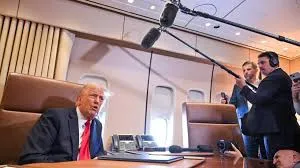
Economic Implications of 25% Tariffs on Imports
U.S. President Donald Trump announced his intention to reintroduce a 25% tariff on steel imports and a 10% tariff on aluminum imports if he returns to office. This move aligns with his previous administration’s “America First” policies, aimed at protecting U.S. industries from what he considered unfair competition, particularly from countries like China.
Trump argues that these tariffs are necessary to safeguard American jobs, bolster domestic manufacturing, and reduce reliance on foreign imports. However, critics point out that such measures could lead to higher costs for American consumers and manufacturers who rely on imported materials, potentially igniting trade disputes.
The tariffs imposed during his first term faced significant backlash from U.S. allies, including Canada and the European Union, and prompted retaliatory tariffs that affected American exports. Economists remain divided on whether the tariffs significantly benefited U.S. industries or hurt the broader economy.